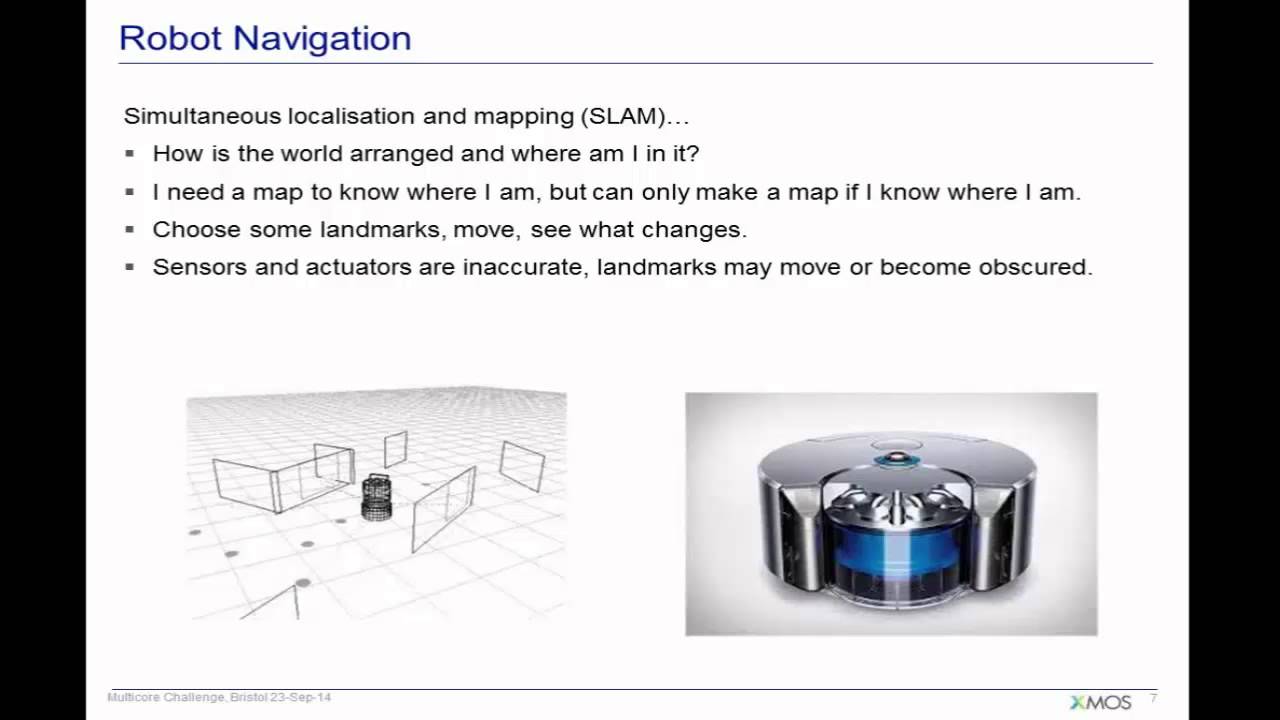The Royal Institution
Ian Stewart explains the Monty Hall problem and its solution.
Subscribe for regular science videos: http://bit.ly/RiSubscRibe
The Monty Hall problem became infamous in the 1990s where newspaper columnist and puzzle solver Marilyn vos Savant offered a solution to it that, despite being right, was so counter intuitive that hundreds and thousands of people refused to believe her.
The problem takes the shape of a game show, where there are three doors. Behind two of the doors there are booby prizes – goats, and behind one door is the big prize – a sports car.
The contestant is asked to pick a door. The host, who knows what’s behind each door opens one of the other two to reveal a goat. At this point the contestant is offered the choice of either sticking with their initial pick or swapping to the other remaining door. Should the contestant make the swap?
Watch the full lecture: http://www.rigb.org/christmas-lectures/watch/1997/the-magical-maze/outrageous-fortune?utm_source=youtube&utm_medium=social&utm_term=description
Ian Stewart gave the 1997 Christmas Lectures “The Magical Maze” about hows how maths governs almost every aspect of our lives, ranging from our birthdays to American game shows, calling in at panthers, petals, and the logic of chaos.
The third lecture in the series is all about probability.
Watch the full series: http://www.rigb.org/christmas-lectures/watch/1997/the-magical-maze?utm_source=youtube&utm_medium=social&utm_term=description
The Ri is on Twitter: http://twitter.com/ri_science
and Facebook: http://www.facebook.com/royalinstitution
and Tumblr: http://ri-science.tumblr.com/
Our editorial policy: http://www.rigb.org/home/editorial-policy
Subscribe for the latest science videos: http://bit.ly/RiNewsletter
Source




what BS and the kid should have grabbed the car and flipped the host off
he left out the best part
originally a bunch of PhDs, statisticians and mathematicians wrote marilyn and told her how completely wrong she was and that she should leave math to those qualified to do it LOL
Marcus De Sotoy explains tbis better
He's so sweet.
Always loved this one,
“This video is sooooooo wrong! It is better to stick with your original choice!" (Quote from president of the Chevon Producers of India)
Instead of some attempt at a logical argument or something (they can be very wrong when it comes to probability), I think the best way to understand this problem is simply to enumerate all possible cases, which doesn't take long with 3 doors, and convince yourself that it's correct.
Respectfully, this is incorrect. And its frankly just a rehash. The door you pick has the car 1/3 across BOTH doors opening. If you pick A, 1/6 it will have the car and B open, and 1/6 it will have the car and C open. Both doors NEVER open at the same time. Those odds are simple when you recognize that it is a compound event (1/3 that door has the car * 1/2 the host opens that door). The door you switch to is 2/6, because the door opening is NOT a factor, the host must open a specific door. The odds of B having the car and C opening are 1/3 * 1. Imagine you play the game 300 times and pick A every time. 100 times A will have the car, 50 when B opens, and 50 when C opens. 100 times B will have the car, and all 100 of those C will open. 100 times C will have the car and all 100 of those B will open. You pick A and the host opens C, the matches for that are 50 for A, and 100 for B. Nothing doubled. The number of occurrences of the whole that match the premise are different. You started with 100/300 for each door. Door C opened and you actually are left with 50/150 for A, and 100/150 for B. B did not increase, A decreased. But that is only true if you mistakenly said that A had 1/3 (50/300 when B opens and 50/300 when C opens). While it is true that A will have the car 100/300 — it is also irrelevant. Because the rules tell you that one door will open, only one door, and never both nor none. Your 100/300 is incorrect. And everything that follows that is incorrect. Is your math correct? Sure. Did you do the correct math? No. The reason why you should switch doors is because when you see C open, you know that B did not open and you eliminate everything that can happen when B opens from being possible : that's 100/300 when C has the car, and 50/300 when A has the car.
I think Jeremy would have been happy to get a pet goat 🙂
We could also look at this the other way round: if the show host had revealed the car instead of a goat, there would be zero possibility that the car would have been behind either of the other two doors. So we established the principle that the game show host choosing a door to open changes the odds. Also the principle that he has no choice about which door to open without ruining his game. That's what helped me to work out out the first time I read the Monty Hall problem.
It’s because you’re going to have a 2/3 chance of picking a goat in the BEGINNING. So because you start off with bad luck in the first place, and the host tells you which door has the second goat, he reduces your chances of “bad luck” and you have a greater chance of winning the car if you switch because the first choice you picked is most likely wrong. Once you get the concept intuitively, you’ll realize the math makes sense and your mind will be blown.
Some quick Java code to show that Marilyn vos Savant is of course right:
https://youtu.be/hsiq6HVV_Go
There is a small error in the description: her name is Marilyn vos Savant. For more information, see https://en.wikipedia.org/wiki/Marilyn_vos_Savant
iv never heard of that problem but his explanation is intuitive
—————— edit : BELOW IS WRONG ——————
The card demonstration really helped. And then when you go back to the three-door version you realize you can summarize it as… 50% of the time the gameshow host is offering you the right door to pick, and that's better than the 33% chance you had when you started.
It's a good summary but the contestant would not be receptive to that idea without the card demonstration.
—————— edit : I'M WRONG, see below ——————
the key is the second step after the contestant picks their door, the host does not make an independent choice but ALWAYS shows them a goat thereby giving up information. I never understood this until I tried to code a simulation into my TI-85 calculator to simulate runs of the problem using a random number generator etc. However while coding the program, the trick became so obvious that it all hinges on the fact that the host automatically shows you a goat in the second step and will never show you the sports car therefore eliminating one of the door choices for free that I didn't need to finish writing the code. This is the power of coding, it forces you to clarify your thinking and make your logic explicit.
this is the magic of Bayes. probability is sort of a subjective number which depends on the state of your knowledge. the probability of the sportscar behind one of the two doors at the end is 50% only if you didn't know that one of the doors represents the goatless door out of a set of two doors. to someone who just walks in and doesn't have your state of knowledge, the probability will be 5050. the host knows where the car is and for him the probability is still different 100�. probability sums up missing knowledge and so is dependent on the individual's knowledge
He made it easy to understand and it's fascinating!
But wait! Why didn't the boy get to keep the car?
Indeed, but the lady did not create it. This issue has been known for a verey long time. Rubbish!
I wonder I got the IQ of Merlyn! but why the name Monty hall?